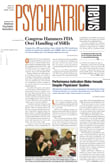There is good news and bad news about states' efforts to expand the number of people who are insured, Barbara Yondorf, president of a Denver-based health policy consulting firm, told an audience at the National Academy for State Health Policy's annual conference.
“The good news is that there are strategies that work,” she said. “The bad news is that they are mostly expensive. Solutions will not be budget neutral.”
Yondorf, who has headed the health and finance sections of the National Conference of State Legislatures (NCSL), wrote a paper titled “State Options for Expanding Health Care Access” for that organization in which she examined published literature about the results of states' efforts to expand coverage.
Yondorf divided 26 options into three categories: expand private health insurance coverage, expand government-sponsored coverage programs, and expand direct care programs.
She cautioned that the research had been conducted prior and up to the middle of 2003, so results did not reflect the impact of worsening state budget problems.
Expansion of eligibility for Medicaid and the State Children's Health Insurance Program (SCHIP) are the “most effective” strategies for increasing coverage, Yondorf said. She quoted a statement from Leighton Ku, a senior fellow at the Center on Budget and Policy Priorities. “If enrollment in Medicaid and SCHIP had not grown in 2002, the number of Americans without health insurance would have been much higher [than 43.6 million].”
Researchers for several studies have found that states can increase enrollment rates in Medicaid and SCHIP by intensifying outreach efforts and simplifying enrollment procedures.
A SCHIP program in which the federal government provided premium assistance to employers who, in turn, insured low-income children of their employees has not been “particularly effective” because of its administrative complexity and cost.
Enrollment in SCHIP declined in the second half of 2003 for the first time since the program was established in 1997 (Psychiatric News, September 3).
An effort to encourage “Ticket to Work” participants to enroll in employer-sponsored health insurance and use Medicaid as a supplement has not been successful because the participants often work fewer hours than necessary to qualify for coverage. Ticket to Work waives some Medicaid income-eligibility requirements to encourage beneficiaries to obtain employment.
The establishment by a state of a high-risk pool to cover otherwise uninsurable individuals has had a “small positive effect” on coverage rates. Enrollment in high-risk pools increased 20 percent between 2001 and 2002. In June 2002, however, those pools covered only 153,351 individuals, a figure that represents about .4 percent of the 41 million Americans without insurance.
Pennsylvania, Washington, and Massachusetts have set up state-funded programs targeted to low-income individuals who are not eligible for Medicaid. In Washington, for example, the state offers premium subsidies for coverage from private insurance plans to people with incomes at 200 percent or less of the federal poverty level.
Yondorf told the audience, “There were some surprising results. Some `obvious' strategies don't work.”
Among them are the use of group purchasing mechanisms by small employers. A study of small-group purchasing alliances in California, Connecticut, and Florida found they “neither reduced small employer premiums nor increased the number of small businesses offering health insurance to their employees.”
There is also no evidence that coverage is increased by the availability of state tax credits to small employers to offset their costs of providing insurance.
Yondorf speculated that the size of the credit generally does not provide a sufficient incentive to employers.
She offered concluding observations to the audience. “Convenience matters. It is one reason Medicaid expansion has been so successful. Build on existing programs and watch administrative costs.”
And, finally, “Don't let ideology get in the way of evidence.”
